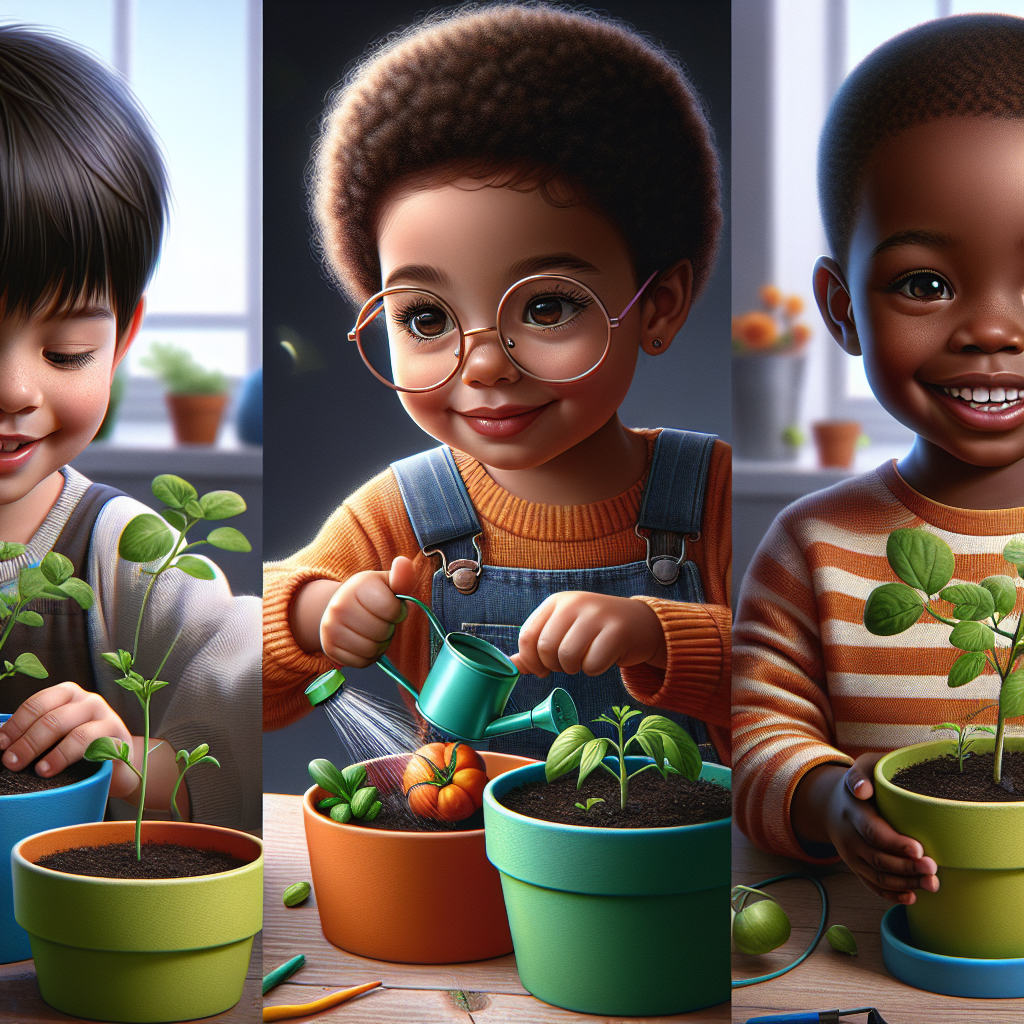Container gardening is a fun and educational activity that can engage kids in learning about plants, nature, and the environment. It provides an opportunity for children to get their hands dirty, observe the growth of various plants up close, and develop a sense of responsibility as they care for their own mini garden. In addition to being a hands-on way to teach kids about biology and botany, container gardening can also instill in them important life skills such as patience, teamwork, and problem-solving.
In this article, we will explore the benefits of container gardening for kids and provide some educational project ideas that young gardeners can enjoy. Whether you have limited outdoor space or simply want to introduce your children to the joys of gardening in a manageable way, container gardening is a great option for fostering curiosity, creativity, and a love for nature in young minds. So roll up your sleeves, grab some soil and seeds, and let’s get started on creating a vibrant and educational container garden with your kids!
**Choosing the Right Containers**
When it comes to container gardening for kids, choosing the right containers is key. Look for pots or containers that are lightweight, durable, and easy for small hands to handle. Plastic pots are a good option as they are affordable, come in various sizes and colors, and are lightweight enough for kids to move around easily. Make sure the containers have drainage holes at the bottom to prevent waterlogging which could harm the plants’ roots. Additionally, consider using self-watering containers or adding saucers underneath the pots to help maintain proper moisture levels in the soil.
**Selecting Plants**
The next step in creating an educational container garden with kids is selecting suitable plants to grow. Opt for plants that are easy to grow and maintain such as herbs like basil, mint, or chives; flowers like marigolds or pansies; or vegetables like cherry tomatoes or lettuce. Encourage your children to choose plants that interest them or appeal to their senses – whether it’s the smell of fragrant herbs or the bright colors of flowers. This will help keep them engaged and excited about tending to their garden.
**Planting Seeds**
Once you’ve chosen your containers and plants, it’s time to get planting! Involve your kids in every step of the planting process – from filling the containers with potting mix to sowing seeds at the recommended depth. Teach them about seed spacing and watering requirements based on each plant’s needs. Encourage them to observe how seeds sprout into seedlings over time and discuss concepts like photosynthesis, germination, and plant growth stages as they watch their garden come alive.
**Caring for Plants**
Teaching kids how to care for their container garden is an important part of the learning experience. Show them how to water plants properly by checking soil moisture levels before watering and avoiding overwatering which can lead to root rot. Discuss the importance of sunlight for plant growth and encourage them to rotate pots regularly so all sides receive equal light exposure. Involve your children in tasks like pruning dead leaves or flowers, fertilizing occasionally with kid-friendly organic plant food if needed.
**Observing Growth**
One of the most exciting aspects of container gardening for kids is watching their plants grow and thrive over time. Create a journal or notebook where they can record observations such as plant height changes, leaf color variations, or flower blooming dates. Encourage them to take photos at different stages of plant growth so they can visually track progress throughout the growing season.
**Harvesting Rewards**
As their container garden matures, kids will have the opportunity to harvest fresh herbs or vegetables grown with their own hands – a rewarding experience that teaches them about food production firsthand. Show them how to harvest produce at its peak ripeness by gently picking fruits or leaves from plants without damaging them. Incorporate harvested herbs into meals they help prepare or encourage them to share their bounty with family members or neighbors.
**FAQs:**
1. **Is container gardening suitable for all ages?**
Container gardening can be enjoyed by children of all ages under adult supervision depending on age-appropriate tasks assigned.
2 . **What if I don’t have outdoor space?**
Container gardens can be placed indoors near sunny windowsills where adequate light is available.
3 . **How often should I water my container garden?**
The frequency of watering will depend on factors such as plant type/size/container material but generally aim for even soil moisture without soggy conditions.
4 . **Can I reuse potting mix from previous years?**
It’s best practice not reused old potting mix due potential disease risk but consider composting used mix before disposal.
In conclusion,
Kids who engage in container gardening gain valuable skills while having fun getting hands-on with nature – an activity that nurtures both personal development through responsibility taking alongside understanding science concepts whilst creating beautiful living spaces full vibrant colors fragrances!













